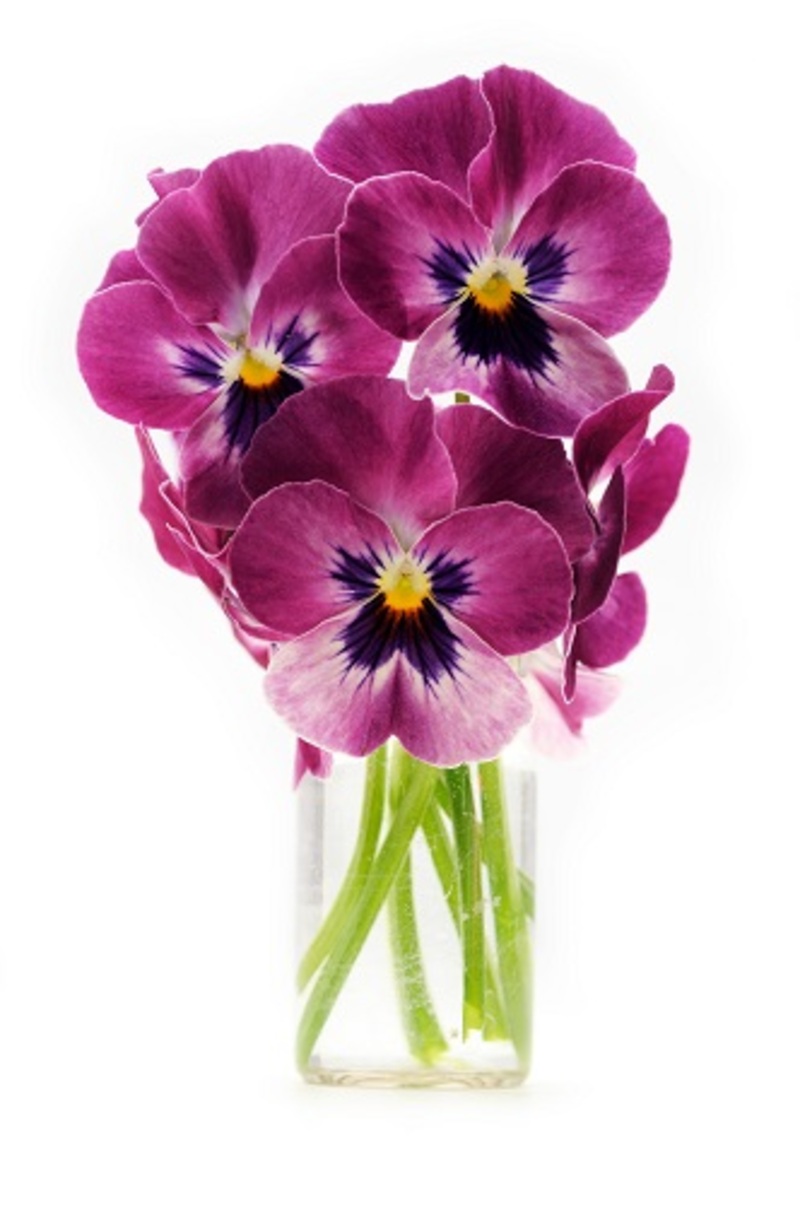Crafting a Hydrangea Haven: Essential Care Tips
Posted on 27/08/2025
Crafting a Hydrangea Haven: Essential Care Tips
Hydrangeas captivate gardeners and flower enthusiasts alike with their lush foliage and exquisite clusters of blooms. Whether you're an amateur gardener or a seasoned horticulturist, creating a hydrangea haven in your garden is both rewarding and achievable. This guide details vital hydrangea care tips, ensuring your landscape flourishes with vivid color and striking blooms all season long.
Understanding Hydrangeas: Types & Features
To nurture a vibrant hydrangea sanctuary, it's essential to know your varieties. Hydrangeas come in several captivating forms, each with its own care demands and unique charm.
- Bigleaf Hydrangea (Hydrangea macrophylla): Known for their large mophead and lacecap flowers, often in shades ranging from blue to pink, depending on soil pH.
- Panicled Hydrangea (Hydrangea paniculata): Renowned for their elongated, cone-shaped flower clusters and exceptional cold hardiness.
- Smooth Hydrangea (Hydrangea arborescens): Famous for robust blooms, including the classic 'Annabelle' variety with its huge, snowball-like clusters.
- Oakleaf Hydrangea (Hydrangea quercifolia): Valued for their distinctive lobed foliage and ivory-to-pink blooms that also offer brilliant autumn color.
- Climbing Hydrangea (Hydrangea anomala petiolaris): A vigorous vine, perfect for trellises and shaded walls, displaying lacecap-like clusters.
Choosing the Right Spot: Site Selection Tips
Hydrangeas thrive when their location aligns with their natural habitat. Site selection is a critical step in crafting your own hydrangea retreat.
- Sunlight: Most hydrangeas prefer morning sun and afternoon shade. However, panicle types can handle more sun, while bigleaf and oakleaf favor filtered light.
- Shelter: Protect your hydrangea beds from harsh winds and midday heat, which can scorch leaves and diminish flower quality.
- Soil: Hydrangeas flourish in rich, well-drained, and slightly acidic soil. Amend with compost or organic matter for best results.

Soil Preparation: Laying the Groundwork for Hydrangea Care
The secret to a hydrangea haven begins at root level. Start with a thorough soil preparation to ensure vigorous growth and abundant blooms.
Testing and Amending Soil
- Test your soil's pH. Hydrangeas favor slightly acidic conditions--ideally between 5.5 and 6.5.
- Incorporate peat moss, well-rotted manure, or compost to improve drainage and fertility.
- For clay-rich soils, add sand or perlite to enhance aeration and allow roots to develop.
- In sandy soils, increase water retention with organic humus.
Optimizing soil pH can also influence your hydrangea's flower color. Bigleaf hydrangeas produce blue blooms in acidic soil and pink blooms in alkaline soil. Add soil sulfur or aluminum sulfate for blue flowers, or lime for pink.
Best Practices for Planting Hydrangeas
Proper planting is foundational for a healthy hydrangea sanctuary. Here are essential planting tips to get your shrubs off to a vibrant start:
- Dig holes twice as wide and as deep as the root ball for ample root expansion.
- Space each hydrangea according to its mature size to ensure ideal airflow and reduce disease risk.
- Backfill with a mix of native soil and organic amendments, being careful not to bury the crown.
- Water thoroughly after planting to eliminate air pockets around the roots.
- Mulch with leaf mold, shredded bark, or pine straw to retain moisture, suppress weeds, and regulate soil temperature.
Watering Wisdom: Keeping Hydrangeas Hydrated
Consistent moisture is key to lush hydrangea growth and abundant flowering. Whether your hydrangea haven is new or established, follow these best watering practices:
- Water deeply and infrequently, soaking the root zone to encourage deep root systems.
- Monitor soil moisture. Don't let the soil become soggy, as standing water leads to root rot.
- Water early in the day to allow foliage to dry before nightfall, preventing fungal diseases.
- During hot, dry spells, increase watering frequency and check container-grown hydrangeas daily.
A key tip: hydrangeas will wilt in the midday sun but often recover by evening. If wilting persists, that's a sign more consistent watering is needed.
Feeding for Flourishing Blooms: How & When to Fertilize Hydrangeas
Healthy, vibrant hydrangeas are the result of a balanced fertilization regime. Here's how to nourish your plants for a season of spectacular blooms:
- Feed hydrangeas with a balanced, slow-release fertilizer in early spring as new growth emerges.
- For bigleaf and smooth hydrangeas, apply a second feeding in early summer to encourage continual blooming.
- Avoid high-nitrogen fertilizers, which result in lush foliage at the expense of flowers.
- Organic options such as fish emulsion or compost tea provide a gentle, steady supply of nutrients.
Remember, excess fertilizer can lead to weak stems and fewer flowers--apply sparingly and follow package directions.
Pruning Principles: Techniques for Tidy & Productive Hydrangeas
Pruning hydrangeas is both an art and a science, depending on the type you are growing. Correct pruning results in fuller shrubs and more prolific blooms.
When and How to Prune Each Hydrangea Variety
- Bigleaf and Oakleaf Hydrangeas: Flower on old wood. Prune right after blooming (late spring to early summer) by trimming back spent flowers and cutting out weak, old stems.
- Panicle and Smooth Hydrangeas: Bloom on new wood. Prune in late winter or very early spring before growth begins, cutting back to strong pairs of buds.
- Climbing Hydrangeas: Require minimal pruning. Remove stray or damaged stems after bloom.
Always use sharp, clean tools to prevent disease and reduce plant stress. Don't prune too severely, as over-pruning can reduce next year's blooms.
Pest & Disease Control for a Healthy Hydrangea Garden
No garden sanctuary is immune to pests and diseases, but regular vigilance keeps your hydrangea haven healthy and robust. Watch for the following:
- Aphids and Spider Mites: These tiny pests can distort leaves and stunt growth. Wash off with a strong jet of water or treat with insecticidal soap.
- Powdery Mildew: Seen as a white, powdery coating on leaves, it thrives in humidity. Ensure good air circulation and avoid overhead watering.
- Leaf Spot: Brown or black spots can signal fungal problems. Remove affected leaves and mulch to prevent soil splash.
- Utilize companion planting--lavender and marigolds help deter common bugs.
By staying proactive and treating early, you can enjoy healthy hydrangea blooms season after season.
Winter Protection: Keeping Your Hydrangea Sanctuary Safe
Hydrangeas are hardy, but winter's chill can threaten buds and roots--especially in colder regions. Prepare your hydrangea beds with these protective measures:
- In late fall, apply a thick layer of mulch (4-6 inches) over the root zone.
- For bigleaf and oakleaf types, build a leaf or straw cage around the base for extra insulation.
- Avoid late-season pruning, which stimulates tender new growth susceptible to frost.
- In containers, move hydrangeas into a sheltered location, such as a garage or shed, to avoid freeze damage.
Designing Your Hydrangea Haven: Landscaping Inspiration
Hydrangeas are versatile--whether planted in groups, as stand-alone specimens, or blended with other garden favorites. Here's how to make the most of your blooming oasis:
- Layer heights by combining varieties, such as pairing bold panicles at the rear with lower-growing bigleaf or smooth hydrangeas in front.
- Edge paths with hydrangea borders for a lush, cottage-garden ambiance.
- Interplant with shade-loving perennials like hostas, astilbes, and ferns for a tapestry of color and texture.
- Make use of containers for patios and decks, especially for varieties where soil pH manipulation is desired.
Seasonal interest: Most hydrangeas have year-round appeal--from verdant spring growth and summer blooms to fiery fall foliage and architectural winter stems.
Troubleshooting Common Hydrangea Issues
Even the most experienced gardeners face occasional setbacks. Here's how to tackle common hydrangea challenges:
- Few or no blooms? Causes may include too much shade, incorrect pruning, late frosts, or excess nitrogen.
- Leaf yellowing? Check for poor drainage, nutrient deficiencies, or overwatering.
- Droopy stems? Typically a sign of underwatering or root issues. Amend soil and increase soaking sessions.
- Sudden color change? Soil pH, maturity, and weather can all impact bloom hues. Test and amend accordingly.

Frequently Asked Questions About Hydrangea Cultivation
How can I make my hydrangeas bloom more profusely?
Focus on the essentials: proper sunlight, regular watering, judicious feeding, and timely pruning depending on the hydrangea type, while protecting buds from late frosts.
Can I grow hydrangeas in containers?
Absolutely! Use a container large enough for root growth, and plant in fertile, well-draining soil. Water and feed more often, as pots dry out quickly.
Why do my hydrangea flowers turn brown early?
This usually results from drought or excessive heat. Ensure consistent moisture, mulch generously, and provide afternoon shade for sensitive varieties.
Conclusion: Your Lush and Lovely Hydrangea Sanctuary Awaits
Crafting a thriving hydrangea haven requires a fusion of knowledge, patience, and creativity. By understanding your varieties, perfecting your soil, mastering watering techniques, fertilizing with care, and pruning appropriately, your garden will burst forth with the exuberance of bountiful blooms. Protecting against pests, providing winter safeguards, and creatively designing your space are the finishing touches to a radiant, restorative landscape. This comprehensive approach will ensure your hydrangea sanctuary dazzles year after year--bringing beauty, serenity, and joy to your home.
Ready to begin? Embrace these expert hydrangea care tips, and let your gardening dreams take root!
Latest Posts
Low Maintenance Plants to Boost Office Ambiance
Crafting a Hydrangea Haven: Essential Care Tips
Achieving Maximum Poinsettia Longevity at Home





